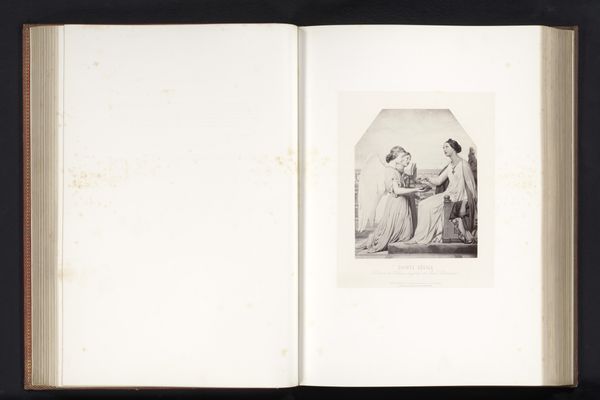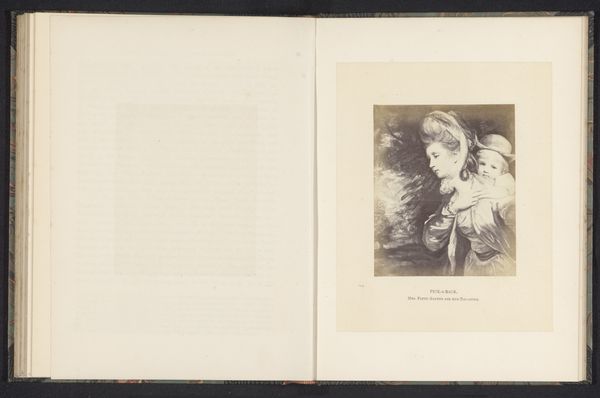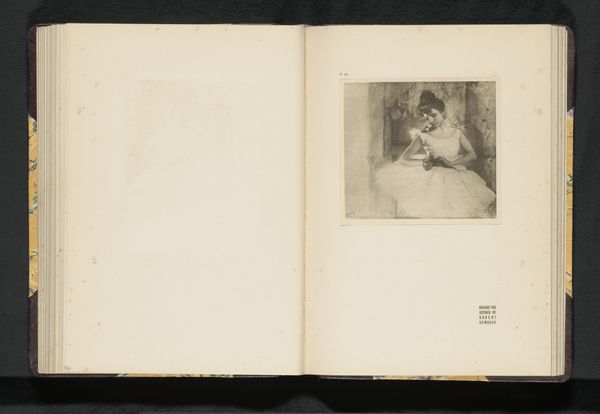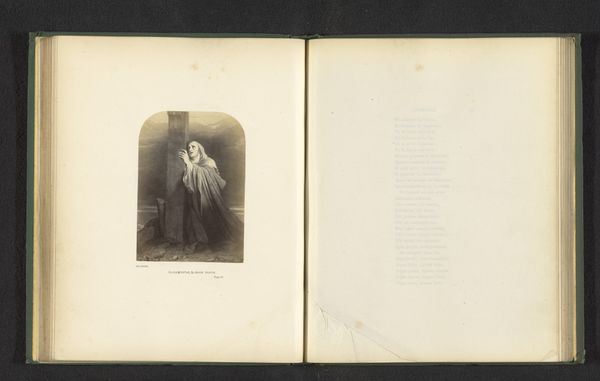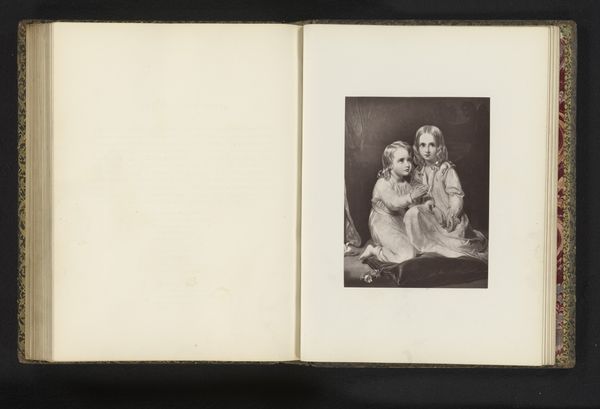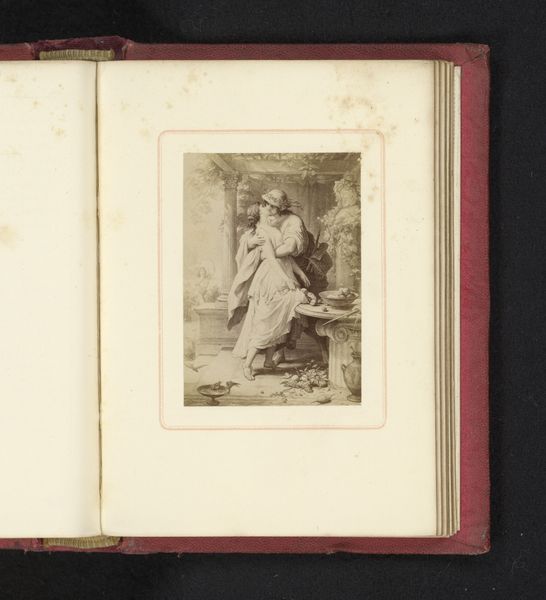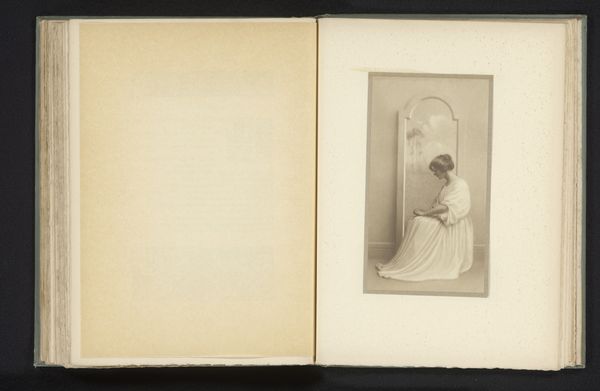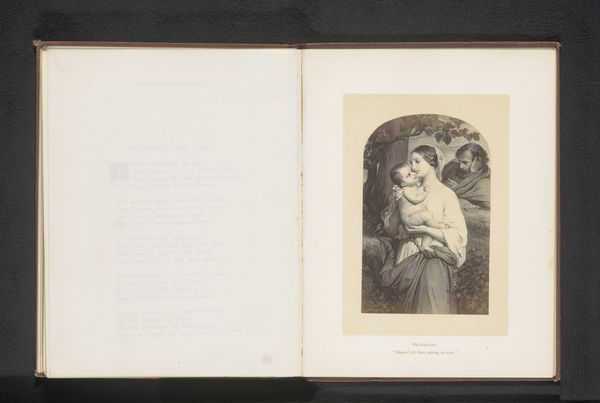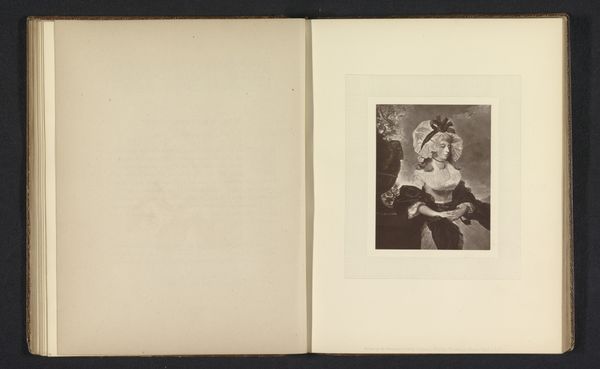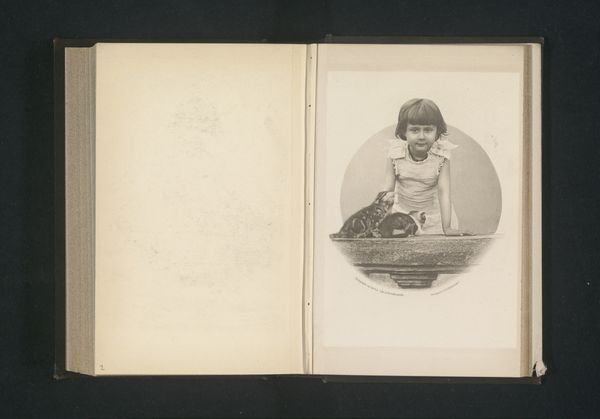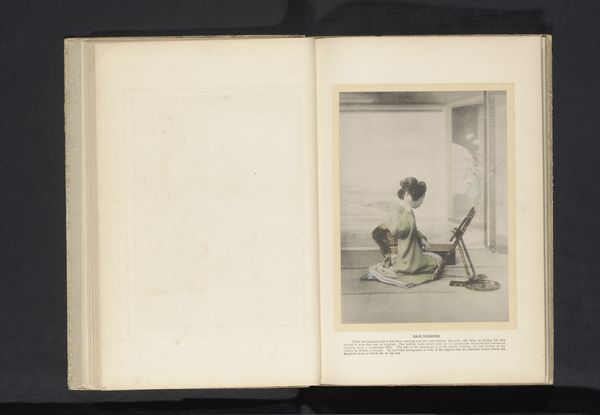
Fotoreproductie van een schilderij van een baby, bekend als The Infant Johnson, door Joshua Reynolds before 1867
0:00
0:00
photography, gelatin-silver-print, pendant
#
portrait
#
photography
#
gelatin-silver-print
#
pendant
Dimensions: height 130 mm, width 101 mm
Copyright: Rijks Museum: Open Domain
Curator: This gelatin silver print, created before 1867, presents a photographic reproduction of Joshua Reynolds’ painting, “The Infant Johnson.” What catches your eye first? Editor: The photograph's subdued tonality immediately gives it a sentimental, almost melancholic air. The child's bowed head and crossed arms only intensify that feeling. I am intrigued by its surface, the texture of the gelatin silver is so unique. Curator: Indeed, the texture adds another layer. These photo reproductions served an important purpose at the time. Photography was democratizing art, allowing wider audiences to access and possess copies of famous paintings like Reynolds' without the cost and elitism associated with commissioning original works. Editor: I'm particularly interested in how the photograph renders the texture and brushstrokes of Reynolds' painting. Does the photographic process flatten the material presence of paint, or does it create a new, parallel materiality in the silver and gelatin? The photographic process is still itself, after all, and it takes on new meaning through labor. Curator: That's a great point. The photographic rendering inevitably translates the original's materiality, reshaping it according to its own chemical and mechanical processes. It is interesting to consider how these reproductive images entered popular culture, circulating in albums or as individual prints to be displayed. Consider the original painting and what statement it makes about class and access and what impact these mass reproduced images have on that dialogue. Editor: It does shift the dynamic significantly. A single patron holding an original artwork to then allow this access to the broader populace is no small political act. The act of displaying the photograph itself becomes an assertion of cultural capital, albeit a more accessible one. What does it say about shifting class dynamics in the latter half of the 19th century? Curator: Precisely. I see it as an important artifact documenting changing attitudes toward art ownership and the increasing desire for widespread cultural participation. The choice of subject matter, a reproduction of a respected portrait, would have appealed to a burgeoning middle class eager to embrace artistic traditions. Editor: Ultimately, this print tells a story of evolving access and production, as well as the complex social meanings invested in art itself. It truly blurs the line between documentation and creation, making this gelatin silver print worthy of further study. Curator: An excellent point! It's interesting to consider the image as both a representation and a material object contributing to the evolving landscape of art and its consumption.
Comments
No comments
Be the first to comment and join the conversation on the ultimate creative platform.

